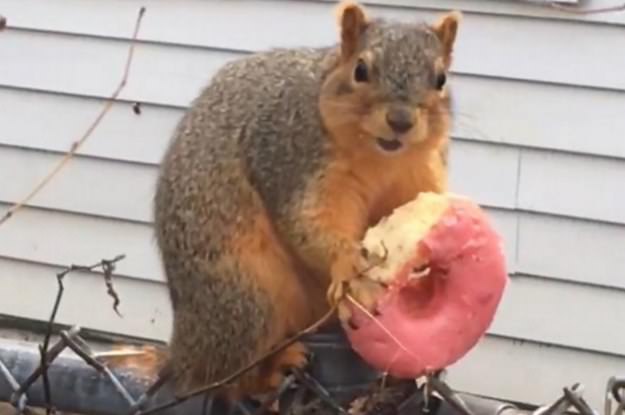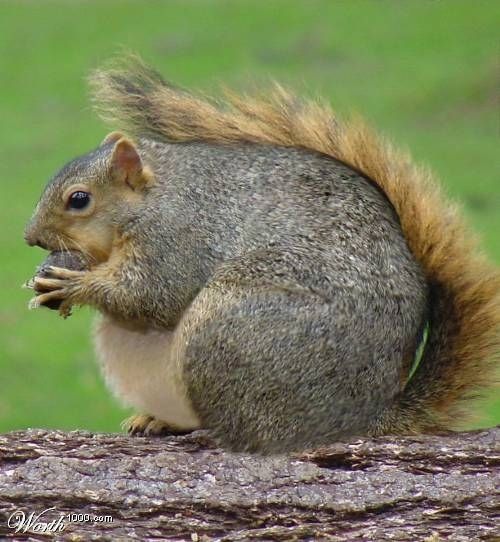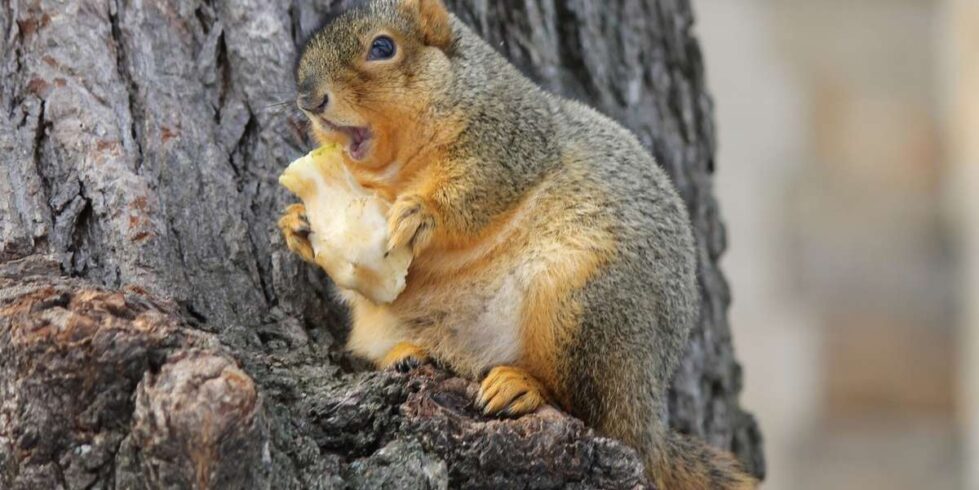If you’ve ever had your bird feeder ravaged by hungry squirrels, then you already know squirrels have a voracious appetite and can be quite destructive. Squirrels will eat just about everything, even cicadas. Homeowners should beware that while squirrels are cute, they are still rodents like mice and rats.
Cicadas do not bite or sting; hence they are not dangerous to pets. Cicadas, in general, do not cause long-term harm (except possibly to young trees and shrubs). When swallowed, they can cause gastrointestinal trouble in dogs and cats because the exoskeleton can be tough to digest. However, squirrels enjoy preying on cicadas. But it’s not just squirrels who do so.
What are Common Predators of Cicadas?
Various predators, from your cat and dog to rats, wasps, birds, and deadly snakes, prey on billions of cicadas emerging from the ground all over the United States, which include the following:
- Cats
- Dogs
- Birds
- Wasps and insects
- Snakes
- Rats
- Squirrels
- Raccoons
- Foxes
Squirrels are Destructive Rodents
Squirrels are rodents, yet they seem to get a free pass more often from homeowners than other rodents like rats and mice. The grey squirrel, the most common type of squirrel, may be found throughout North America. The flying squirrel, and the fox squirrel, commonly known as the red squirrel, are other common species of squirrel.
While it’s fun to see a few squirrels scurrying around in your yard or playing in the trees on your property, these rodents can wreak havoc on your lawn or garden in their search for food. And even more destruction if they get into your walls or attic.

What Do Squirrels Eat?
Just like mice and rats, squirrels consume a wide variety of foods. Squirrels aren’t fussy when it comes to food. This is obvious if you have spent any time examining the eating patterns of common squirrels.
Nuts and seeds make up as much as 95% of the eastern gray squirrel diet. In particular, squirrels prefer acorns and nuts. Insects and other food derived from animals make up 2% of a squirrel’s diet. So, a typical squirrel will eat just over a quarter pound of food every day. On average one squirrel can eat almost 2 lbs of food per week. (Even more, if given the opportunity!)
Squirrels naturally eat various fruits, flowers, vegetables, fungus, nuts, trees, plants, and insects that are endemic to their environment.
However, when it comes to the squirrels’ eating habits, there are few limits. They are curious about everything and have developed a taste for numerous items that they should not eat, such as sugary snacks and cereals popular among children.
Vegetables and Fruits
Squirrels of all kinds are vegetarians. They are not fussy eaters and will eat almost any meal offered to them, though they favor vegetables and fruit. Corn, mushrooms, squash, and broccoli are among the squirrel’s favorite foods. Apples, oranges, apricots, and avocados are additional favorites.
Nuts, Roots and Flower Bulbs
To maintain their teeth filed, squirrels eat tree limbs, twigs, and bark. Nuts are also a part of a squirrel’s diet. These most favorite meals are corns, walnuts, and peanuts. They eat insects, seeds, eggs, and plant components such as flower bulbs and roots in addition to nuts. The squirrel, like all rodents, has four front teeth that are constantly growing.
Squirrels are hoarders who dig holes and hide their food in various places. This is something they do all year, not just in the winter. Squirrels will not only dig holes in your grass, but they will also destroy your garden in pursuit of flower bulbs, which are a treat to them.
Squirrels will also dig “fake” storage holes and leave no food inside, so other animals are unaware of their true food stashes. Clever, right?

How to Get Rid of Squirrels?
While these rodents might be amusing, they can also cause a lot of problems. Squirrels are common in the wild because they outnumber predators by a large margin.
They seek shelter in houses because of the large population and diminishing natural habitat due to heavy construction in many regions. Squirrels seek out the comfort of attics throughout the chilly months of fall and winter -so beware!
If squirrels have become an unwelcome source of fun in your residence and you need to get rid of them, then here are a few easy ways that will help you in squirrel removal.
- Trapping grey squirrels alive using metal box traps that are at least two feet long is often the most efficient removal method. Place apple chunks, peanut butter, or various nuts-baited traps along heavily used paths, on rooftops, along porch railings, or in the attic. Squirrels should be removed immediately from cages and released once caught.
- Professional pest control – The squirrels living in the attic might fall into wall cavities from the inside or even down the chimney from the outside. In these situations, a pest management professional is recommended because if the squirrel is not removed timely and dies, you will have to cope with the stink of the rotting body.
- If you choose to do squirrel removal on your own then lower a thick rope down the chimney to provide a pathway for a squirrel stuck inside to climb out. To save another trip to the roof to grab the rope after the squirrel has left, drop the other end of the rope to the ground (Because of the dangers of roof accidents, we do not recommend this)
- One of the safest, easiest ways of getting rid of squirrels is to hire a pest control company so you don’t have to deal with a caged squirrel, disposal, relocation or risk getting bit.
Tips to Keep Squirrels out of Your House
- Tree branches that may overhang the roofline should be pruned.
- Remove any firewood that has been placed against the house.
- Repair any foundational wall fractures that you find.
- Seal the entrance spots of your home.
Have a squirrel problem? Call us today! New Phone
Further reading for squirrel control:
Get Rid of Squirrels in the Attic
Why Squirrel Removal is Important for Homeowners

